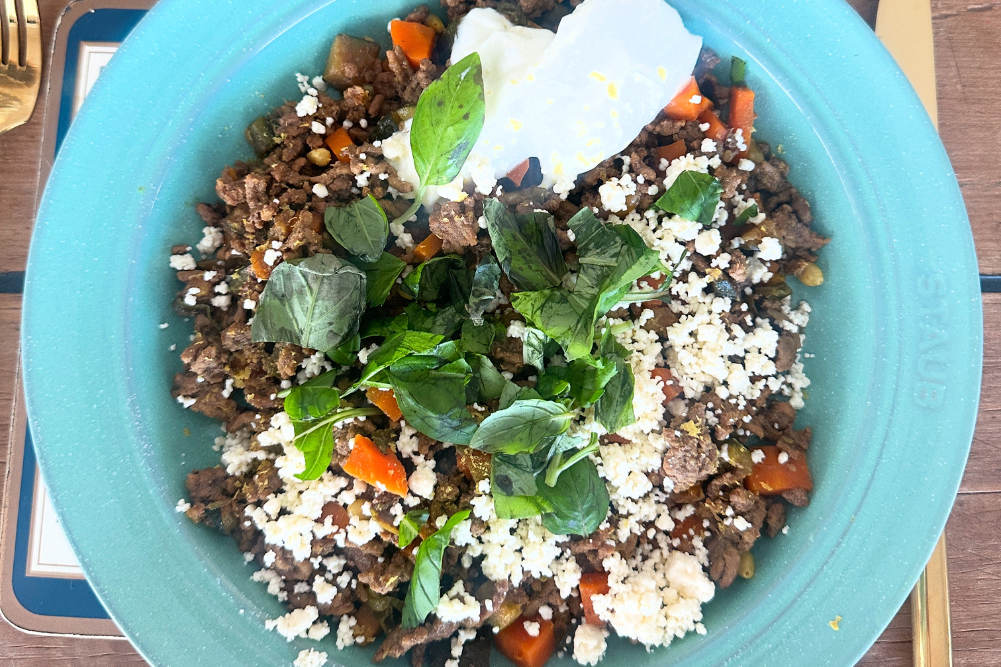Breaking Out of Prison: The Search For Humane Pathways
In some instances, imprisonment is a tool of punishment that serves neither an offender nor society. Around the world more productive ways are being sought as ways to deal with perpetrators of crime. So does Restorative Justice work?
Many informed observers consider jail a blunt instrument that doesn’t work particularly well for most prisoners, while also a necessary evil for managing crime. In their view, spending more money on keeping more people locked up is not a solution.
One common theme in the area of criminal justice is punishment or retribution, especially where the type of offence committed arouses strong feelings. This ties in with a belief in some quarters that jails should be unpleasant places, creating a second layer of punishment on top of the basic deprivation of liberty. Another view is that jail itself should be the punishment and that alienating, violent or unpleasant prison conditions generate more problems than they solve.
A prison sentence acts like a wrecking ball in the life of a person jailed. Families are fragmented, marriages are more likely to break down, social networks are severed and rental accommodation is lost. Upon release, the hard work of repairing this damage adds to the challenge inherent in successful rehabilitation. Short sentences are particularly unhelpful because they create this social damage, while not being sufficiently long to serve as a strong deterrent.
British jails are currently at their capacity, which is forcing the Conservative government to pursue less punitive alternatives, among other measures. Justice Secretary Alex Chalk has announced plans to generally scrap sentences of 12 months or less, to be replaced with alternatives such as community service.
Recently, the Netherlands has been in the news for closing dozens of jails, coupled with a low national crime rate that continues to drop. Contributing factors include shorter sentences, decriminalisation of soft drugsand sex work, and diversion programs. Former prison buildings are being repurposed for creative uses.
Tackling reoffending
The rate of reoffending, technically known as recidivism, is a key factor in measuring the relative success or failure of the prison system in its goal of rehabilitation, where the offender has not only reformed but is well-adjusted for thriving outside prison walls. Recidivism rates are higher among Firstm Nations prisoners, people who are first sentenced at a young age and where sentences are short.
When emerging from the jail environment, exprisoners usually find that the deck is stacked against them. Reoffending is driven by factors such as a lack of skills for navigating the outside world, a precarious financial state, a lack of social support, a lack of easy-to-access mental health support and a lack of employment opportunities caused by many businesses refusing to employ former prisoners.
However, there are solutions to help ex-convicts exit the prison cycle:
- Some companies such as British service retailer Timpson offer employment to ex-prisoners and those that are let out on day-release.
- Provision of subsidised housing for released prisoners.
- The acquiring of educational qualifications while in jail and innovative programs that offer virtualreality- based job training via computer.
- Mentoring prisoners who are still in jail, with a focus on adjusting to life outside. Such programs involve ex-prisoners and work best when they are non-judgmental and respectful. One such example in the Netherlands is named Criminal Minded, run by musician Rivelino Rigters.
- Treating prisoners like people, in a humane rehabilitation-oriented system such as Norway’s, which mimics relationships in the outside world.
- The treatment of drug addiction among prisonersand ex-prisoners and the use of mental health interventions such as cognitive behaviour therapy.
Prevention is better than cure
Justice reinvestment is a movement that originated in the US, and which seeks to redirect some funding away from the ‘downstream’ management of crime in areas such as extra policing and building jails, into the ‘upstream’ causes of crime and recidivism in communities. This largely involves tackling social and health problems. Close-knit communities themselves are a strong crime deterrent.
This strategy puts the community in the driver’s seat, unlike in the mainstream criminal justice system where it plays a peripheral role. The scope of justice reinvestment can be expanded to take in diversion programs that pursue alternatives to jail, and include initiatives in some Australian states that allow people to manage fines by working them off, or by participating in rehabilitation programs.
One of the most attractive aspects of this approach is that, like preventative health, when investments are intelligently directed, they tend to save far more money in the long run. A 2014 University of Queensland report found that diverting just 0.2 per cent of the state’s youth justice budget into social work could save government coffers up to AUD $263 million by 2030.
Restorative strategies
Rather than being a single approach, restorative justice is a kind of toolkit involving a variety of innovative approaches that contrast with traditional ideas surrounding punishment. It reframes the issue of justice and involves a broader set of stakeholders. Two key goals are rehabilitation and reducing recidivism rates. Its core concerns have been described as responding to a particular harm, preventing further harm and promoting community wellbeing. While participation is voluntary, many offenders will take it up when offered.
On the website of the Australian group Justice Action,the goal of restorative justice is summarised as to “mediate and reconcile tensions between offenders, victims and the community”. Sharing some similarities with indigenous ways of thinking, it is often used in Aboriginal circles and has been described as “restoring right relations” in the affected community.
In Australia, Aboriginals are grossly overrepresentedin the jail system, making up 3.8 per cent of thecountry’s population, but a disproportionate 32 per cent of jail numbers. The same pattern tends to repeat in other countries that have indigenous populations. Maori in New Zealand make up 17.4 per cent of demographic numbers and about 52 percent of the prison population. Contributing factors include intergenerational trauma, social disadvantage, economic marginalisation and racist policing bias. Alternatives to jail may have a lot to offer.
Restorative justice can take a number of forms, sometimes in combination:
- Victim-offender mediation meetings. Perpetrators of crimes meet with the victims and acknowledge the harm they have caused, hopefully resulting in remorse and healing.
- Victim-offender meetings where offenders of a type of crime meet with unconnected victims, in order to understand the human impact of their behaviour.
- Post-sentencing or pre-release healing. The community of people affected by a crime, which has resulted in a jail term, meets to make sense of their experience. This usually gives crime victims more satisfaction than in the mainstream justice system.
- Family group conferencing. The family of an offender, with input from the victim and community support groups, decides on the sanctions to be taken. It aims to resolve emotional conflict and unresolved feelings, and to address harm. This model originated in New Zealand in 1989.
- Forum sentencing is a model for adult offenders, which is common in New South Wales. It brings together the victim, offender and other people affected, with a view to repairing harm and reducing the risk of reoffending. An intervention plan is usually prepared for the offender.
- Sentencing circles, also sometimes called peacemaking circles. These are available in cases where the perpetrator has admitted guilt.Common in North American indigenous settings, these are also used in the Australian indigenous community. They involve tribal elders and the application of indigenous customary law as an alternative to jail time. The circle in this model contrasts with the traditional hierarchies of the courtroom. For the Navajo, who utilise this model, the circle is a symbol of community, as well as unity, wholeness and balance.
- Sentencing support. A court refers a case onto a restorative pathway after a determination of guilt. An agreement is reached among participants, returned to the court and is factored in during the sentencing process.
- Restitution, usually in the form of a financial payment made from the offender to the victim.
- For non-violent and non-sexual offences that are liable to attract shorter prison terms, diversion measures are an alternative to jail. These can include community service, curfews, electronic monitoring, such as ankle tags, or home detention.
In Australia, restorative justice arrived in 1991, when the police introduced conferencing in the NSW city of Wagga Wagga. Since then, the restorative justice field has undergone an expansion and is available in all states and territories. Yet it could benefit from more funding, in order to be up-scaled and extended beyond youth justice, into the adult justice system, which has so far only occurred to a meaningful extent in the ACT.
A NSW program named Magistrates Early Referralinto Treatment works to break the drug-crime cycle by treating alcohol and drug addiction as health issues, diverting offenders from prosecution into drug treatment. In Western Australia in 2020, Noongar elders and prisoners contributed to thedesign of an in-prison restorative program for the Aboriginal community. Its purpose is to use story, art, music, play and ceremony (ritual), tailored to the goal of rehabilitation.
New Zealand is a world leader in this field, after pioneering the family group-conferencing model at end of the 1980s, a time when the number of young people charged in the Youth Court nosedived. Today, up to 80 per cent of young offenders are diverted from the court in favour of restorative practices such as familycentred mediation. Despite its successes, New Zealand has a lot of scope to expand this type of model into the adult justice sector, where it has been little-used.
An inspiring pathway for young people
Youth crime is the subject of a moral panic in states such as Queensland, where some children experience being locked up in police watch houses, held in solitary confinement, or subjected to restraint methods such as “spit hoods”.
A completely different model has been developed by a Spanish body called the Diagrama Foundation, which diverts offending youths into small-scale residential facilities, of which there were 38 at the last count. A few years ago, it was involved with 70 per cent of Spain’s young people in custody.
The experience of jail reinforces the trauma and social exclusion that characterise the life of many young offenders. At Diagrama, young people are required to adhere to strong boundaries around their behaviour. They are also given warmth, care and encouragement, qualities that many young people in the justice system missed out on when they were younger. Family-based support is a good way to prevent young people from reaching the criminal justice system, but where this family support is deficient, the modelling of healthy parenting is very beneficial.
One central goal is to provide young people with tools in preparation for release, including social skills and skills useful for gaining employment. Youth are given growing levels of autonomy and access to the world outside. Connection with family and thecommunity is actively encouraged. All of Diagrama’s interventions are designed to achieve rehabilitation and minimise recidivism.
Overcoming the challenges
Populist attitudes to crime are frequently driven by tabloid headlines and talkback radio, and are shaped by a media that is driven by the economics of winning audience share, something that is aided by engaging primitive emotional responses. In the political arena, this can translate into “tough on crime” rhetoric and “law and order” election-time policies from the major parties that might superficially sound impressive, but instead stack up future bills for taxpayers. Another challenge inherent in giving media coverage to restorative justice is that, encompassing a wide variety of approaches, it is difficult to concisely summarise.
The cost of incarceration per prisoner per year has been measured at AUD $148,000 in Australia and NZD $151,000 in New Zealand. For children under 18, an astronomical figure of AUD $985,500 per person per year was recently supplied in NSW Budget Estimates hearings.
In the meantime, jail populations are being swelled by dysfunctions such as the imprisonment of unsentenced people, who make up 37 per cent of Australia’s prison population and 43 per cent of New Zealand’s. This tends to be the result of bail refusal, which in turn is driven by political pressure to enact tougher measures. Prisoner numbers are swelled when parole is denied due to a lack of suitable housing post-release, as has occurred in Victoria.
However, research has found that members of the public tend to be open to innovative justice models, if they have been briefed on how these would function. Despite the challenges that it faces, restorative justice remains an effective set of tools for addressing crime at a deeper level. It just requires more media exposure and a change of mindset among a critical mass of the public to receive broader support.








